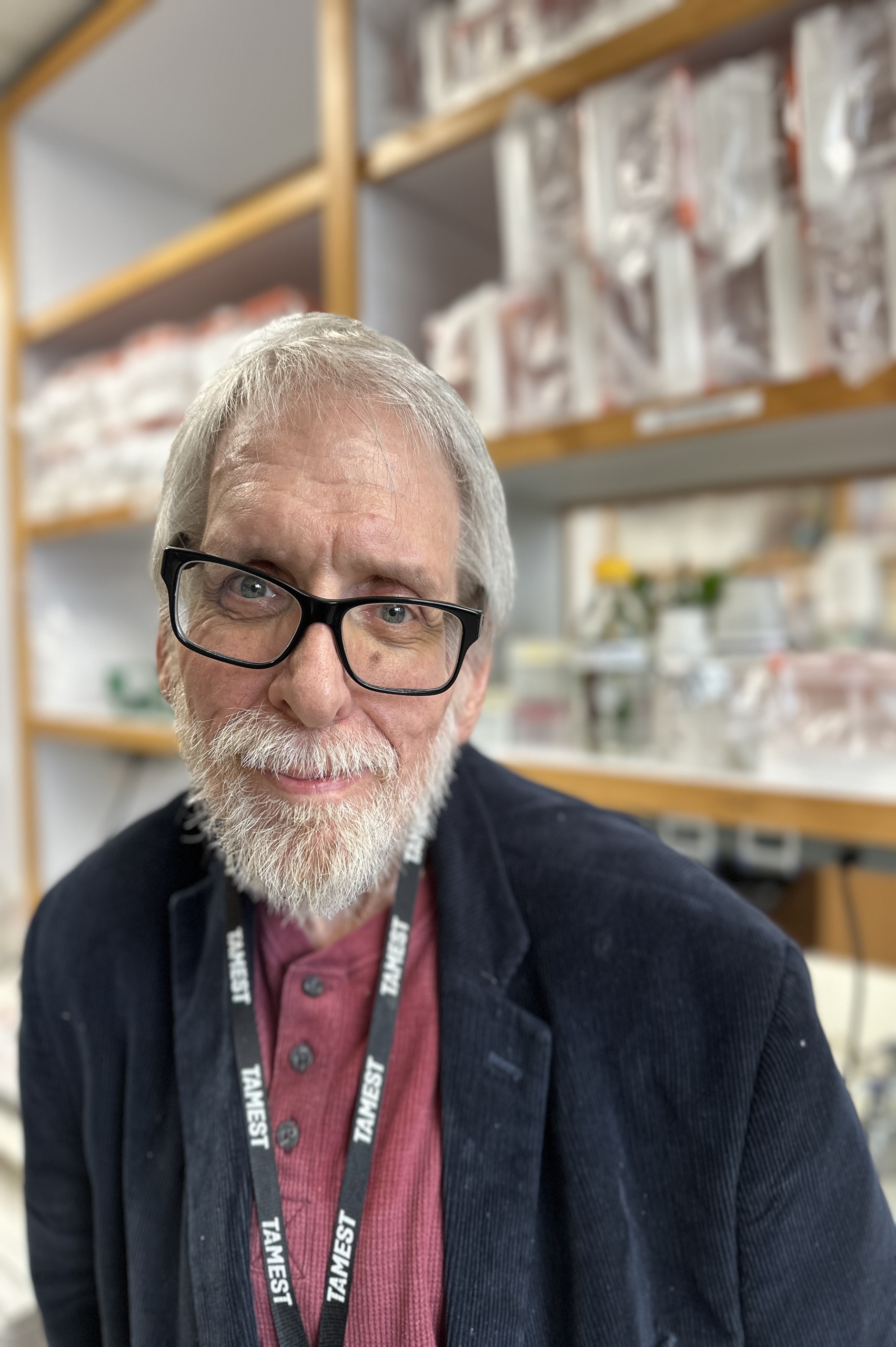Professor James R. Lupski is the Cullen Professor of Genetics and Genomics in the Departments of Molecular and Human Genetics, and of Paediatrics, at Baylor College of Medicine and Attending Physician Texas Children’s Hospital, Houston, Texas, USA. He will be giving the Mendel Lecture on Tuesday 4 June at 13.30hrs.
It’s not uncommon for eminent researchers to say that their interest in science started with figuring out how things work, taking them apart, and reassembling them. But to continue by researching their own health problems is much less frequent. However, that’s the path down which James Lupski travelled.
“As a child, I always liked to take things apart and put them back together, and I had a particular penchant for doing this with the neighbour’s lawnmowers, making motorised bicycles that morphed into minibikes and small motorcycles. I also liked to make my own fireworks, having taught myself to make gunpowder during my teenage years, and became terribly excited by some of the explosive results,” he says.
Lupski was born In Hicksville on Long Island in New York State. His grandmother’s mother fled Ukraine during the Russian Revolution and arrived in New York seven months pregnant. His father’s mother was born a US citizen two months later. His father was an electrician, and his mother a busy homemaker who also was a teacher of culinary arts in adult evening education classes at the high school. “They married the week dad graduated from high school and had five children before he was 25 years old.”
He went to the same high school as they did, but he was home-schooled during most of period he should have spent there because he had developed a condition that caused foot deformities and difficulties in walking. “I had ten operations during high school and the first few years of college. After each, I spent considerable time in a wheelchair or on crutches while I recovered, so I spent most of high school being home-schooled. I only had tutoring for a couple of hours a day, four days a week, leaving me with plenty of free time to explore my curiosity.”
His elder brother had also developed similar problems though much earlier in life, and was originally given a diagnosis of muscular dystrophy, but when James developed the same symptoms it was clear that there was an underlying familial genetic cause. Eventually this was shown to be Charcot-Marie-Tooth neuropathy (CMT).
“It was my home tutor who exposed me to DNA for the first time. The genetics that I tried to understand from the standpoint of transmission of traits with respect to my brother and myself was now the reality of a tangible molecule and the chemistry that explains the biology of the living organism. In college, I elected to study chemistry because of my fascination with the subject, but also completed biology as a major given the number of biology courses I needed to take to fulfil the requirements to apply to medical school.”
After obtaining a BA from New York University in 1979, followed by a PhD and MD from the same institution, he moved to Texas with a combination of a paediatrics residency and clinical genetics training at Texas Children’s Hospital. There he came across Tom Caskey, who was a Visiting Lecturer at the NYU Medical Scientist Training Program whom Jim hosted whilst a student at NYU; Tom was in the process of forming a new Institute for Molecular and Human Genetics at Baylor College of Medicine in Houston. The Institute wanted to recruit young geneticists in all areas of genetics – bacteria, yeast, fruit fly, mouse, and human – to form a bridging department between research, clinical practice, and clinical laboratory diagnostics in clinical and human genetics. “I had been particularly intrigued by reading as a graduate student about the mapping of the Huntington’s disease locus and thought it would be interesting to try to take this experimental approach in CMT disease, which although usually transmitted in an autosomal dominant manner seemed to be an autosomal recessive trait in my family,” he says.
Although several dozen genes were identified by Lupski and others as possibly resulting in CMT disease, that which was responsible for the disease in his family remained elusive. It was the advent of next-generation sequencing that made personal genome sequencing feasible, both practically and financially. “The BCM Human Genome Sequencing Centre completed some of the first personal genomes, including Jim Watson’s and mine. For my genome, it was extremely exciting to find the disease-causing variant alleles and the gene responsible for CMT disease in my family. Our family was particularly helpful to research efforts because all family members volunteered to participate in the studies and three generations of samples were available for study, but it was an n = 1 family. Given the size of my family and the fact that DNA samples had been collected from my grandparents 25 years earlier, the three-generation pedigree and multiple affected and unaffected siblings maximised the interpretation of per-locus sequencing data.”
In addition to his work on CMT, Lupski has studied many other neurological disorders with a focus on neurodevelopment and neurodegeneration, as well as genomic disorders, eye diseases, birth defects, and more. “I use the human as a model organism and disease phenotypes to study genetics and the biology of disease,” he says.
He will be telling the conference about what he calls “Biology in balance: gene dosage and genetic models as paths to characterising and mitigating disease” – a delve into the way in which the principles of biological balance and complementarity underlie all of life science, evolution, evolutionary medicine, and genomic medicine. And he won’t forget to mention his feeling of privilege at being both a human subject and a direct stakeholder in these research efforts. “Not many people have the opportunity to participate in human genetics and genomics research, both as subject and physician investigator.”



